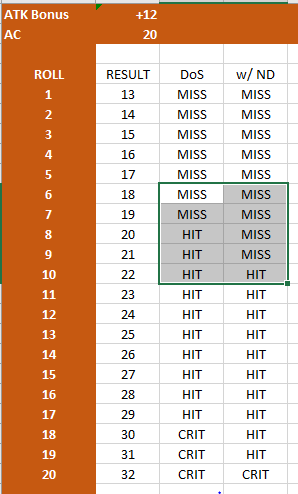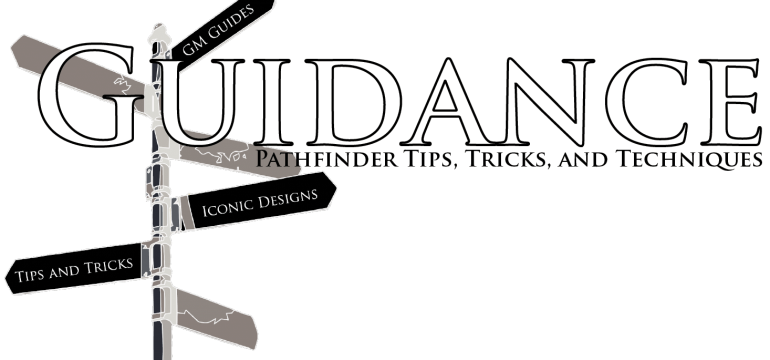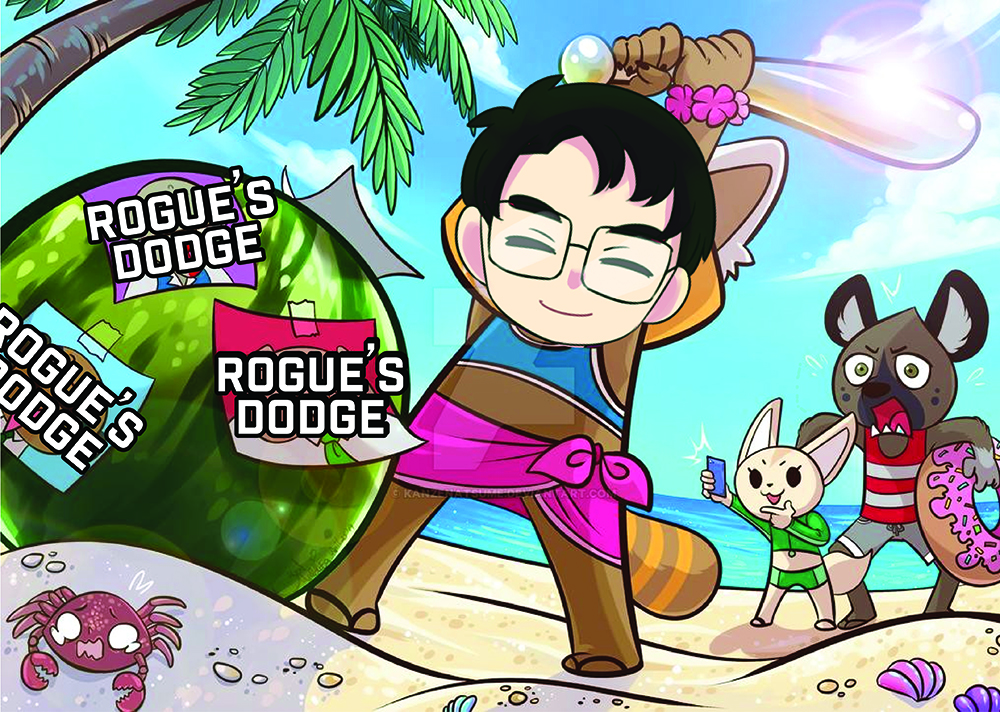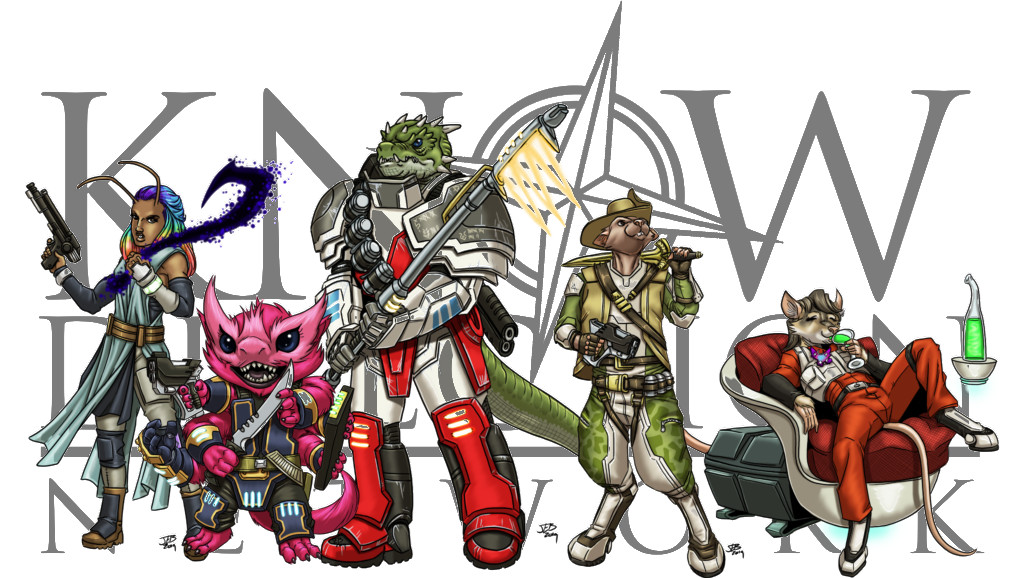Hi everyone! I’m Alex, and I hate Nimble Dodge.
It started out innocently enough. One of my players took Nimble Dodge for his rogue character in my Age of Ashes campaign, and MAN, let me tell you, that feat is like the worst feat I’ve ever seen. It’s so bad that my players have made a meme out of tracking how often it actually affects my poor player’s fate. I loathe Nimble Dodge so much that I even made a thread about it on Paizo.com with many of these points.

I LOATHE YOU, NIMBLE DODGE!
For those who don’t know, you use Rogue’s Dodge as a reaction when someone attempts an attack against you, and it gives you +2 to your AC against the triggering attack. On paper, this sounds amazing. In practice, the feat isn’t worth the ink it’s printed on. Allow me to explain.
 Mathing Out Nimble Dodge
Mathing Out Nimble Dodge
Since the feat is giving you a +2 bonus, you might think, “Oh, that’s a 10% increase to the chance that I won’t be hit. That’s great.” It can turn a Critical Hit into a Hit or a Hit into a Miss. However, since a Critical Hit is attack result = your AC + 10 and a Hit is attack result = your AC, there are actually only four die results wherein Rogue’s Dodge actually benefits you.
Let’s say you have AC 20 and your opponent has an attack bonus of +12. This means your opponent Hits you if they roll an 8 or better or Crits you if they roll a 16 or better. Since Rogue’s Dodge gives a +2 circumstance bonus to AC, using Rogue’s Dodge changes those numbers to 10 to Hit or 18 to Crit. In effect, that means Rogue’s Dodge only stops a Hit if your opponent rolled a 8 or a 9 (because now they need a 10 to Hit you) and it only turns a Hit into a Critical Hit if your opponent rolled a 16 or a 17. If your opponent’s result is 10 through 15, surprise! Rogue’s Dodge didn’t change the outcome of your opponent’s attack. Likewise, if they rolled an 18 or better, Rogue’s Dodge did nothing. Don’t believe me? Lemme make like James Ballod and toss a mathematical table in your face.
RAAAAAAAAGE!
TL;DR this feat makes me angry because it’s a reaction that never really has more than a 1520% chance to do anything. My players track the success/failure rate of Rogue’s Dodge, and it’s currently at 1:8 (meaning 1 meaningful use to 8 failed ones); this is out of a sample size of about 24 currently and actually fits the napkin math fairly closely (as depressing as it sounds, my player’s stats actually slightly out-perform the projections!)
So, why am I posting this? Well, the new swashbuckler class literally got the same feat, and I’d like to raise awareness that this feat is awful so hopefully we can get an errata someday; at the very least, make sure the swashbuckler also doesn’t suffer a very ineffective feat.
Issues With Fixing
One of the issues with errating Nimble Dodge is that it’s pretty common for rogue-like monsters and NPCs in Pathfinder Second Edition to get this feat. For example, in Age of Ashes there’s an enemy rogue fairly early on that has Nimble Dodge. Apparently this is common, and because PF2 spells out so many abilities in the stat block, what ends up happening is that this one ability has been reprinted about six times. (Of course, the entries aren’t consistent between printings; several refer to the trigger being “your opponent attempts an attack against you” while others refer to “your opponent hits you with an attack”, which is a HUGE different.)
My argument, of course, would be that you don’t need to worry about what a MONSTER’S version of the ability does. A monster with Nimble Dodge will probably be around for one fight, and the GM can always fiat the ability if it doesn’t work. A player with Nimble Dodge is making a long-term gameplay commitment, and it had better be a good one!
Solutions
There are a few different ways that I personally think that Nimble Dodge could be fixed in order to make it a not-terrible feat. Let’s go over some.
- The Bonus applies retroactively. Instead of being triggered when your opponent attacks you, it’s triggered when the attack hits. This, honestly, still isn’t great if the GM chooses not to tell you the result of their attack roll. Personally, I would make it say something like “hits by 2 or less or crits by 8 or less”. That’s a mouthful, but it would be more useful because it would only allow you to trigger the reaction when it actually helps you.
- The Bonus applies until the end of the triggering opponent’s turn. This doesn’t make the bonus stronger, but it does allow it to potentially apply to more attack rolls, which means it’s chance to be useful increases.
- The Bonus changes a crit into a hit or a hit into a miss, but you fall prone after using it. This is the most drastic rewrite of the feat but it is also likely the most interesting. Triggering the action has immediate consequences under this version; you are guaranteed to prevent something bad in the now, but you leave yourself vulnerable (aka flat-footed) immediately afterwards.
In Conclusion,
I don’t care for Nimble Dodge because the feat is deceptive in its strength. Where a +2 bonus looks good, the math behind it’s triggering just doesn’t justify it as a feat option. If this was in a SPLAT book, whatever, but this is a Core feat, literally the first one in the book new rogue players will see. I strongly feel the power level of this feat needs to be brought up to make it worthwhile. But what do you think? Leave me your thoughts and solutions in the comments below, or on Discord. Some people in the Paizo thread I link feel that the feat needs to be weaker because reactions “are weaker than actions” or that it’s good because rogues don’t get many reactions. I don’t agree with this (every reaction competes with one another due to the multiclass system after all), but I’m certainly excited to hear what y’all have to say!

Alexander “Alex” Augunas has been playing roleplaying games since 2007, which isn’t nearly as long as 90% of his colleagues. Alexander is an active freelancer for the Pathfinder Roleplaying Game and is best known as the author of the Pact Magic Unbound series by Radiance House. Alex is the owner of Everyman Gaming, LLC and is often stylized as the Everyman Gamer in honor of Guidance’s original home. Alex also cohosts the Private Sanctuary Podcast, along with fellow blogger Anthony Li, and you can follow their exploits on Facebook in the 3.5 Private Sanctuary Group, or on Alex’s Twitter, @AlJAug.
Creative Commons: Summer De-stressing by kanzeNatsume






It’s kinda disappointing to find trap options still a thing in pathfinder
I love the scientific backing with mathematical review, the chart, etc. This is great!
I feel the trait should say “Has a 20% chance to decrease your opponents success rate by 1 [Crit > Succ, and Succ > Fail]. This must be used BEFORE results are determined”
Mechanically it is the same, but it actually shows players how bad it is. Lol
I feel it sucks as well, i misread it before using it in my current game and noticed how poor it was.
I just wanted to point out that there are 2 more numbers where it would affect things, which is for the Crit fail set.